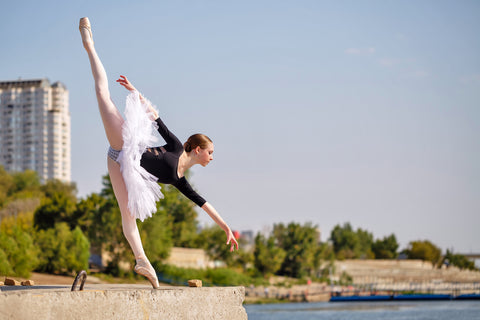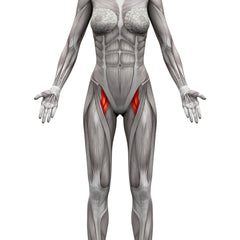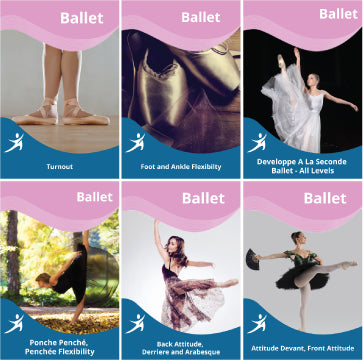Perfect Your Penché
Posted by EasyFlexibility Team on
Have you been dreaming of getting your leg to 6 o'clock in your penché?
It is a versatile skill that is used across many disciplines, from traditional ballet to jazz and modern techniques as well. The penché is an amazing feat of flexibility and strength that is often difficult to perform. However, once accomplished, it is a graceful addition to any dancer’s repertoire.

Most often dancers will focus on the flexibility aspect of the penché. This is of course an important component if you seek to achieve a 180 degree split in your penché. The penché basically takes a regular split and turns it on its side. Therefore, you have to work against gravity to hold the position, which makes it critical that your muscles are strong enough to support it, too.
If you are still working on achieving your best split, check out our articles about that here.
This classical move is essentially an extension of your arabesque. It is imperative to work on this first. For tips on how to improve your arabesque, see Technique Tidbits: Arabesque.
To move into your penché from your arabesque, you must simultaneously tilt your torso forward and down while moving your back leg upward at the same distance. A common image used to describe the action of the penché is a seesaw.
Keeping an arch in your spine is also an important aspect, because otherwise it will become a different move. It also helps to increase the dramatic effect of the body in this position.
So what exactly are the muscles doing?
Watch this video for an in-depth look at the contracting and stretching muscles during a penché:
We are going to focus on an exercise that targets the adductors today. The adductor magnus, longus, and brevis as well as the gracilis play key roles in both the supporting and lifted leg during the penché.
The adductor brevis and longus attachments are pictured below:

Exercise #1
- Start in a lunge type position with the back leg turned out so the toes point to the side. This helps to target the inner thigh.
- Externally rotate the back leg by lifting the toes up toward the sky, without lifting the hip.
- Drop the foot back down to the ground, pressing the hips closer to the floor.
- Repeat 4 times, then try the other side.
It is important to do both sides of this exercise because the adductors play a role in both the standing and extended leg. Also, just like how everything is always done on both sides in dance class, too- this helps to create balance in the body.
Try this exercise today and come back next week for some more tips to make your penché stronger and longer!
Get started today with our Penché Program or Full Ballet Combo Program below.
© ElasticSteel Corp., EasyFlexibility, Paul Zaichik, et. El., 2022. No part of the materials available through ElasticSteel.com, EasyFlexiiblity.com, site may be copied, photocopied, reproduced, translated or reduced to any electronic medium or machine-readable form, in whole or in part, without prior written consent of Paul Zaichik EasyFlexibility.com, Elasticsteel.com.. Any other reproduction in any form without the permission of Paul Zaichik EasyFlexibility.com, Elasticsteel.com is prohibited. All materials contained on this site are protected by United States copyright law and may not be reproduced, distributed, transmitted, displayed, published or broadcast without the prior written permission of Paul Zaichik, EasyFlexibility.com, Elasticsteel.com.
Share this post
- Tags: adductors, ballet, dance, easyflexibility, kinesiological stretching, penche, pointe


